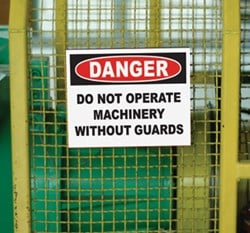ASSP: Advancing Safety with Education and Research

Safety is about to get a whole lot smarter. Through the creation of the Council on Academic Affairs and Research, the American Society of Safety Professionals (ASSP) aims to advance its members and the safety profession. Combining education, advocacy, standards development, and a professional community, the council is an effort to advance the occupational safety and health profession and ultimately help better protect workers.
Safety for the Future
An American Journal of Public Health study found that there is inconsistent emphasis on occupational safety and health information in education and workforce training, even though it is known that the incorporation of OSH in educational programs can reduce work-related injuries and illnesses among young and new workers. ASSP's new council aims to address that inconsistency by placing an emphasis on the importance of higher education and research in the safety arena.
ASSP's new council will be led by a panel of 10 who plan an agenda of heavy research and then translating that research into practice. Part of the strategy in increasing safety and research advancements includes the council engaging with students and working to strengthen accreditation programs at universities. The goal is to also bring more inclusion of health and safety topics in the business and engineering curricula. With ASSP's guidance, colleges could strengthen their EHS programs as well as safety and health education in other professional career paths.
"A need has existed for years in the safety arena to integrate educational standards, program accreditation, student engagement and research-related activities," said ASSP President Rixio Medina. He added that this move helps to establish ASSP's role in the advancement of safety.
The idea for the new council was spawned by past ASSP President Jim Smith and it was voted into action this year. "Academic affairs and research are at the core of every well-developed profession, and safety should be no different," Smith said. "We must support the future of the safety profession by emphasizing the development of evidence-based research and better academic standards."
Strengthen Safety

There is strong evidence by ASSP and other safety organizations to support the benefits of thorough and consistent OSH training to prevent injuries. Safety that is ingrained in the workplace and engaged in from the start can also help improve the safety mindedness of workers, and protect people and property.
Successful OSH training often consists of learning about hazard recognition and controlling those hazards, safe work practices, proper use of personal protective equipment, emergency procedures, and preventive actions. Training can also help workers learn how to find additional information about potential hazards, such as chemical exposures and electrical hazards. An increased knowledge of safety can empower workers and managers to become more active in implementing hazard control programs and help implement changes that enhance workplace protection.
Related Resources
.png)
Get the Most Out of Toolbox Talks: Workplace Safety and Communication
What Are Toolbox Talks? Toolbox Talks, short safety meetings typically held at the job site before the ...
Read
5 Powerful Benefits of Workplace Safety Training
Why Is Workplace Safety Training Important for Preventing Injuries? There are 12,900 worker-related injuries ...
Read
Tips From Fipps: It Pays to Be Safe, The Business Case for Workplace Safety
Workplace safety is not only crucial for protecting employees' well-being but also for the overall success of ...
Read.png)





